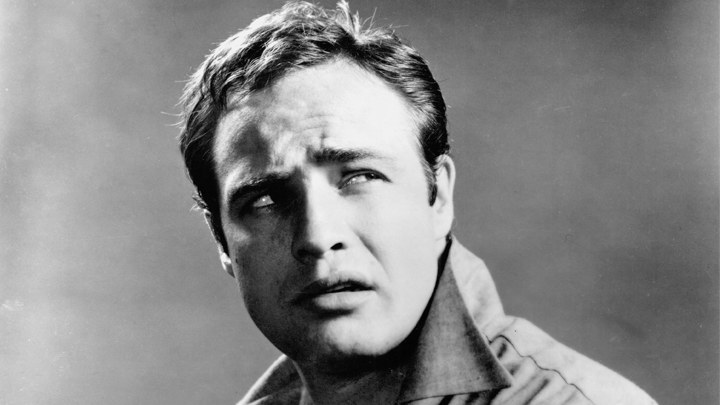
The BFI is staging a series of screenings in London throughout October and November to celebrate the birth of method acting in Hollywood. For past, present or future students of mine, or for anyone interested in Method Acting, it is not to be missed!
The Birth Of The Method
In the 1950s, a new generation of actors burst on to the scene, bringing with them a revolution in acting techniques – The Method.
Under the guidance of Lee Strasberg in the legendary Actors’ Studio, famous names from Marlon Brando and James Dean to Shelly Winters and Paul Newman became a radical new generation of Method actors shifting acting paradigms in Hollywood.
They were the first high-profile actors to explore the deep, inner psychological motivations of their character, and use their own experiences to forge a deep connection with their character through techniques like “sense memory” and “emotional recall.” They laid the foundation for the unique brand of Method Acting we see in Hollywood today.
A BFI Celebration
Throughout October and November 2014, the BFI are holding a serious of events to celebrate the birth of this American brand of method acting, under the title “Birth of the Method: The Revolution in American Acting.”
Through the Sight & Sound “Deep Focus” programme, the transformative years in which American theatre and cinema came together and method acting began its meteoric rise in Hollywood, will be commemorated in a series of screenings.
Complemented by a special feature in November’s edition of Sight & Sound magazine, the event will celebrate the rise of method acting, a revolution that sparked iconic performances from the likes of Marlon Brando and Al Pacino, and brought us 80% of Best Actor Oscar winners since 2000.
The programme kicks off on Saturday 25th October with a screening of the 1950 film The Men, the screen debut of the father of modern method acting, Marlon Brando. The BFI describes it as a “standard-setting, deeply empathetic performance as a paralysed and embittered WWII veteran”, for which Brando prepared, in true Method, by spending a month on a paraplegic ward.
On November 7th, 14th and 29th, you’ll get the chance to see the “definitive Method film” on the big screen. Marlon Brando’s “brilliantly nuanced” performance in On the Waterfront isbelieved to have set the bar for every great American performance since.
You are truly spoilt for choice, with a full list of great and powerful performances from some of the best method actors that ever lived. Watch Montgomery Clift’s quiet determination in Wild River, John Cassavetes’s twitchy method style as a drifter in gritty, ground-breaking film The Edge of the City, or blue-eyed Paul Newman’s convincing performance as a tough Italian-American boxer in Somebody Up There Likes Me. Newman famously prepared for this role by shadowing the real Rocky Graziano for weeks, an immersive process that has been used repeatedly since by method actors from Robert De Niro to Daniel Day Lewis.
For a full list of screenings, and to get your hands on tickets, click here.
To Enjoy 2 tickets for the price of 1 for any event in the BFI’s Birth of the Method: The Revolution in American Acting season , simply quote “Actors 241” on line, in person or over the phone (020 7928 3232).
And if that’s not enough to satisfy your deepest method acting cravings, the BFI will be hosting veteran director of the Method generation, Jack Garfein, in conversation on 27th November at 6.20pm. For full details, and to book tickets, click here.
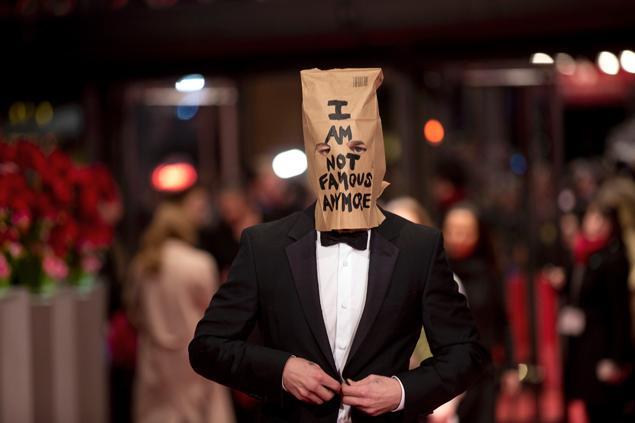
Shia LeBeouf
In a recent article in The New Yorker, Richard Brody asked whether method acting is destroying actors, citing the late Phillip Seymour Hoffman, Joaquin Phoenix and Shia LeBeouf (pictured) as examples.
Brody argued that the act of linking experiences and emotions from our own lives with those of a character, and playing a character by imagining a filled-out life and becoming the part “asks too much of performers”.
We wanted to address this issue with our readers and students, and ask; is the depth and authenticity of Strasberg’s school of method acting too much for actors?
The Method in Extremes
The Method has produced some of the greatest performances on stage and screen living memory. The act of delving into our deepest emotions of a character, to live and breathe their backstory and persona, and feel what they feel has produced authentic, powerful and hard-hitting performances.
80% of Best Actor Oscars have been awarded to method actors.
Method acting has become defined, therefore, by the high profile, well-publicised interpretations of some Hollywood actors.
We are familiar with how Adrien Brody prepared for The Pianist by practicing piano for four hours a day, how Robert De Niro and Joe Pesci lived and trained together for three months in the lead up to Raging Bull or Daniel Day Lewis’s unique approach to role preparation.
In the premature deaths of celebrated method actors like Phillip Seymour Hoffman and Heath Ledger, and the bizarre or unusual behaviour in public and private of the likes of Shia LeBeouf and Joaquin Phoenix, critics have found reason to criticise the Method. They have said that excavating painful memories or experiences from their past to fill out a character is damaging to actors, and had a part to play in their downfalls.
“Heath refused to talk to anyone out of character. If you tried to communicate with him normally instead of The Joker, he would just ignore you”
Christopher Nolan on Heath Ledger in The Dark Knight
Becoming The Part
“Brando’s performances revolutionized American acting precisely because he didn’t seem to be “performing”, in the sense that he wasn’t putting something on, as much as being”
The Method is a set of tools, which accomplished actors must learn to master. It allows you to, for a brief time, become the character. As long as you can compartmentalise, and affectively harness the tools of the Method, there is clear value in disappearing into a role. There is a danger, though, in taking it to extremes.
If you would like to know more about Method acting, why not read my book? It is the first step-by-step guide to method acting.

“An actor’s job is to “feel on cue.””
Every great actor uses their own lives to the full, and constantly exercises their emotional muscles.
One of the most daunting and challenging parts of being an actor is portraying extreme emotions on cue. In auditions, on stage and on screen we are called upon to cry for imaginary relatives, grieve the breakdown of imaginary relationships or get angry at imaginary betrayals.
Most of us use emotional recall from our own lives to achieve as close as possible to how our character might behave. We recollect in our minds heartbreaks, losses or betrayals in our own past lives, and try to conjure the emotions in our performances.
Using memories in this way does not always produce authentic performances, though. It is very difficult to recreate a memory. Effective and believable emotional recall in performance is only achieved through one of the core elements of the Method, Sense Memory.
What is Sense Memory?
“Everything we perceive, interpret, and ultimately feel in life is filtered through our five senses”
Everything we experience in our day to day lives – sounds, smells, feelings, sensations, tastes – is stored in our subconscious using sense memory. These dormant sensual memories, when exercised effectively by the Method actor, can act as triggers to effectively recall emotions.
Sense memory can help to release certain emotions that are locked away. It is the act of revisiting a single image or sense memory to unlock the emotions that surrounded it.
For example – imagine your character is holding vigil at the bedside of a dying relative. You might want to use your own experiences of hospitals, death and grief to inform your performance. Rather than trying to conjure directly the emotional journey that you went on, try to focus on a single sense memory – a ticking clock in the hospital for example, or the sound of the life support machine.
Or maybe your character is engaged in a bitter argument with their partner over a betrayal. Have you ever has a similar argument? What do you remember of the scene? A television in the background? The smell of a meal cooking? A particular song?
Training
Sense memory is at the core of acting. If you can master it, you will be able to create much more authentic, wide and powerful performances. Practice conjuring emotions through sense memory, you will be surprised by the results!
It is important to relax mentally and physically before starting any sense memory exercise. You must clear the space necessary for a response to a sense memory before you begin with the exercise.
Start with a simple sense memory, and with each exercise build on the complexity until you have a spectrum of emotions in the bank. Soon, it will become second nature to use sense memory in your acting.
Sense memory, when mastered, is one of the most powerful tools in the method actor’s arsenal.
If you would like to know more about sense memory, or the various techniques involved in method acting, why not read my book?
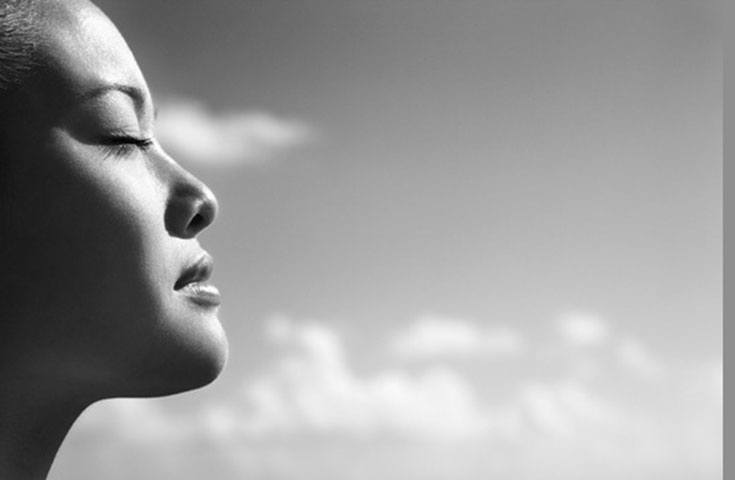
“Act with your scars”
Shelley Winters
“Affective memory” technique is probably one of the most well known method acting exercises. It is widely used by Hollywood actors, whose extreme interpretations have been well documented. For some critics, it is genius, for others, dangerous.
‘Affective memory’ is the act of delving into your own past experiences to add truth and humanity to the pain, suffering and fear of a character. It is an extremely effective technique in which actors find a parallel in their own lives with the character arc of the role they are playing.
How Does It Work?
Once you are relaxed, sit in a chair and begin to relive the past experience that you believe will help with your character. Try to remember as many details as possible about the event – Where did it take place? What were you wearing?
Dig deeper, and try to remember the sensory elements of the experience – what did the place look like? What was the weather like? What did the clothes feel like? How did they smell?
It is important that you recreate the sights, sounds, tastes and smells of the event in as much detail as possible.
At this stage, we are not trying to recreate the emotions that you felt at the time. The hope is that by remembering every sensory element about the experience, the same emotions that you felt then will be naturally triggered.
Sometimes the emotions can be quite unexpected. Often they can be disturbing and traumatic.
Be Careful
“I felt very much at home with the sadder side of Tommy, but it’s not a territory I need to dwell in”
Some of the experiences we need to draw on using the “affective memory” technique can be painful. They are also very powerful. This means it’s important to understand how to use the technique in detail. It’s not for dabblers, you need to master the technique to be able to us use it in a safe and effective manner.
Given the powerful effect of reliving traumatic experiences from your past, we recommend exploring ‘affective memory’ for the first time in the secure environment of a method acting class.
If you would like to explore the “affective memory” technique, or any other aspects of method acting, why not take one of our courses?
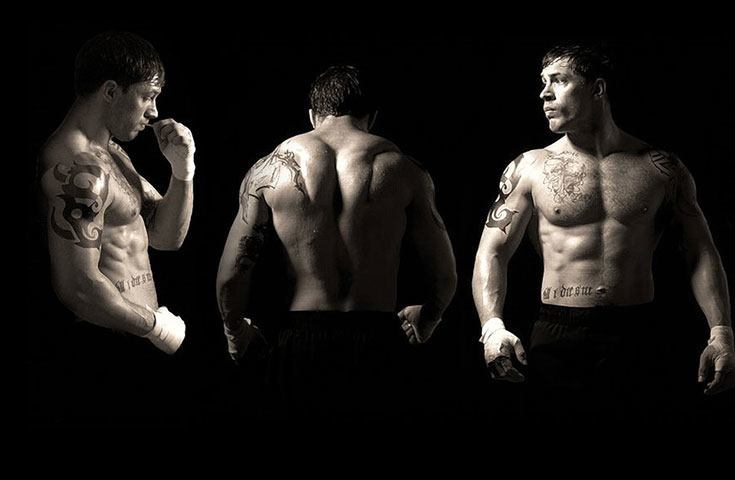
“The secret to moving passions in others is to be moved oneself”
Aristotle
We were reading recently about how Tom Hardy brought his real life experiences into his role as a troubled ex-marine-turned-cage fighter Tommy in the critically acclaimed film ‘Warrior. ’
“The action drama is a paean to redemption and the power of the human spirit, themes that resonate strongly with Hardy.”
At the time that he made ‘Warrior’, American critics were comparing Tom Hardy to a young Marlon Brando, one of the greatest ever method actors. The star of Bronson, Lawless, The Dark Knight Rises, Tinker, Tailor, Soldier, Spy, Inception and the forthcoming Mad Max remake has more life experience than most Hollywood actors to draw on when it comes to playing a character like Tommy.
With a history of drug and alcohol abuse, stealing, gun possession and jail time, he had a deep chest of experiences to channel into tortured ex-marine Tommy.
“I don’t need to discuss or work around the abuse that surrounds alcoholism and dysfunction in families who suffer from that disease because it’s something I can draw on from personal experience.”
Reading about how Tom Hardy connected with the sadder side of Tommy prompted us to think about how the power of bringing real life into character as actors.
Life comes first. What I see in the characters, I first try to see in life
Daniel Day Lewis, Method Actor
The Method is a technique allowing you to inspire yourself at will, in part, by reliving your own life experiences and channeling them through the character. It is the creative (re)experiencing of memory and experience on stage or screen.
“Experience makes the doors open”
Marion Cotillard, Backstage
This is the essence of Konstantin Stanislavsky’s ‘system’ which, we think, lends a greater and deeper truth and humanity to the character. In ‘Warrior’, the spellbinding action in the cage is only half of the story. The emotional and psychological turmoil in its central characters is the other.
Tom Hardy was absolutely believable and compelling as Tommy. He used the ‘affective memory’ method acting technique to create a character that was human and very much alive, not to mention the muscle bulk he put on for the role! Hardy’s ability to draw on poignant personal experiences and channel them is what makes him one of the leading method actors working in Hollywood today.
“The fight is within me, and I’ve been to all kinds of different rooms in my life”
Would you like to learn more about ‘the method’ and how it can help your acting career? Why not take a look at our range of acting courses? Alternatively, why not read my book?
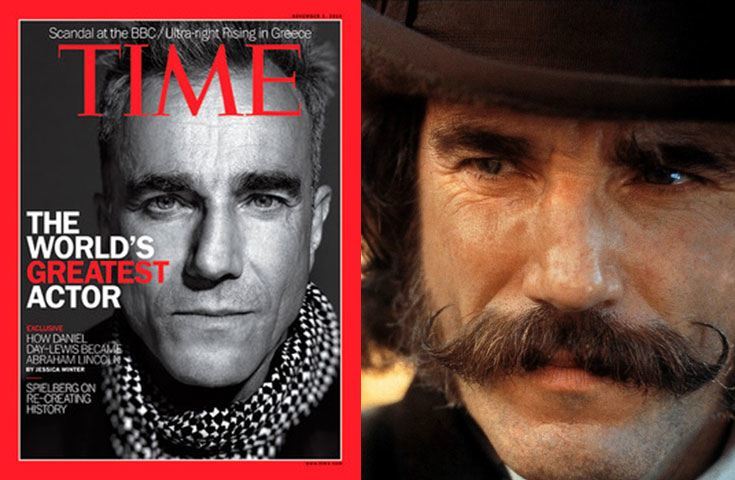
“films don’t begin only when the camera starts rolling”
Most headlines you read about Daniel Day-Lewis, will talk about the “madness” of his method. Is it “madness” or a unique and brilliant brand of method acting that has brought his widespread and universal acclaim?
Despite only having made a dozen films in his career, he remains the only actor ever to win 3 Best Actor Academy Awards. There may be madness in his method, but it sure is working for him!
Daniel Day Lewis’s Unique Method
Day Lewis famously spent the entire shoot of Oscar-winning My Left Foot (1989) in a wheelchair to get into character as cerebral palsy-sufferer Christy Brown. For Last Of The Mohicans (1992), he lived in the woods and learned how to track, kill and skin wild animals. To prepare for In the Name Of The Father (1993), in which he played Gerry Conlon of the Guildford Four, he had himself incarcerated over night and mistreated by the guards. For The Unbearable Likeness Of Being (1988)he took it upon himself to learn Czech, despite the script being in English.
The stories of Daniel Day Lewis’ unique method are well known and very well documented. The man only makes a film every couple of years, and so the story of his preparation for a role is often as talked about as the role itself!
He shuns the spotlight, and is visibly uncomfortable discussing his roles. His reclusiveness creates a level of mystique and intrigue around his process.
“You move very quickly from self-consciousness to a place where you are no longer aware of the decisions you are making, of the life that is taking shape. And that’s how it has to be, because self-consciousness is death in front of the camera.”
While Day Lewis’s method acting has earned him multiple gongs, his real achievement is creating characters that are completely believable and authentic. Daniel Day Lewis doesn’t play the character. He is the character.
“He believes so fervently that he is the character he is playing that audiences are swept along with him.”
In Lincoln (2012)for example, Day-Lewis created a voice and persona for a real historical figure. Given that Abraham Lincoln died in 1865, there are no audio or video recordings of the Civil War-era President. Day-Lewis employed the best of his method techniques to get inside the head of a character he knew little about, to create the voice and character was saw on the screen.
The result won him his third Best Actor Oscar.
While the method that we teach is less about extreme measures, and more effective techniques to channel the character you are playing, Daniel Day Lewis is certainly a fine example of the proven success of the method.
Would you like to train in method acting? Get in touch today to find out more about our courses.

“Method acting is what all actors have always done whenever they acted well.”
Lee Strasberg
To train in method acting is to really get to the foundations of acting. As the founding father of the modern method, Lee Strasberg, put so beautifully, “method acting is at the heart of every convincing performance.”
Method acting cuts straight to the heart of character.
Putting All Your Eggs In One Basket?
While many acting schools will teach the method as one element of a comprehensive acting portfolio, we concentrate exclusively on teaching the method.
Why?
The method approach asks performers to draw on their own experiences and emotions for an interior understanding of the part. Rather than becoming inspired on cue, or summoning an emotion, the method teaches you to channel your own experiences to add more authenticity to the character.
Critics, however, have written that training exclusively in the method is a hindrance, and is equivalent to putting all your eggs in one basket.
However, when 80% of all Best Actor Academy Awards have been awarded to method actors, and the only person to win three Best Actor Oscars is devoted method actor Daniel Day Lewis, we think it’s a pretty good basket to be in.
“When the imagination frees itself, you have no goddamn idea what’s going to happen. So it’s not a constrictive or restrictive way of working – quite the opposite.”
Daniel Day-Lewis
Proven Record
“The difference between a movie star and a movie actor is this – a movie star will say ‘How can I change the script to suit me?’ and a movie actor will say ‘How can I change me to suit the script?’”
The method is used to some degree by most successful actors. It allows them to achieve the intensity and emotion required in emotional scenes. While the method has been ridiculed for extreme examples of actors living in the woods or walking on broken glass, it is at the heart of most great performances.
We are not implying that only actors who studied the method are good actors, but rather that method acting should be recognised as a solid foundation of training. It will serve you well in any role, and in understanding any character that you may play in the future.
It does not shackle or hinder actors in the way some critics have argued. It is as good a foundation for a career in acting as any classical training.
In fact, actors who have come to us off the back of classical drama school have found that the method unlocked new, untapped areas of their performance.
Our method acting classes are comprehensive and affordable, held predominantly on weekends to allow you to work around your studies. As well as teaching method techniques, we also cover more practical elements of the industry such as auditions, marketing and promotion.
We offer training in the method that is relevant to the modern industry and is a solid foundation for any accomplished performance. If you are interested in our method acting courses, but aren’t sure if they’re right for you, why not take a look at some of our testimonials from past students?
Want to know more about our method acting classes?
LA Video 2: This is video is all about where emotion comes from and how to create it. Enjoy!
Video from LA: I was in LA recently with my students and there were quite a few revelations! This video is about something you would think actors do for auditions but don’t…but REALLY should if they want the job.
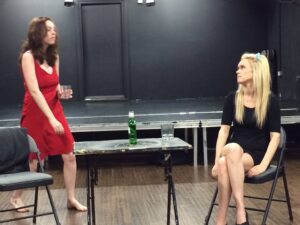 One of the major issues faced not only by actors in training but by many professional actors too, is not wanting to fail.
One of the major issues faced not only by actors in training but by many professional actors too, is not wanting to fail.
One of my students compared it to defusing a bomb on stage. One wrong move and – BANG! – the whole thing blows up in your face. To avoid this, in the same way as if you were defusing a bomb, you stop breathing and restrict your movements.
The other interesting aspect of this analogy is that if you are blown up, you die. That is exactly how it feels if you screw up on stage. You may have heard many a comedian describing the experience of no one laughing at their jokes as dying.
You see, the ego is involved in all this. The ego doesn’t want you in any sort of danger – and from the ego’s point of view, going in front of thousands or millions of people to perform feels like you are going into a very dangerous situation.
So what does it do? It tells you to stop and not make a wrong move or you will experience something similar to death.
Poor old ego – it does have some funny thoughts.
As an actor, you need to train the ego to move past that fear and to embrace the danger and allow yourself to express yourself fully despite being afraid.
How do you do it? You need acting technique to distract the ego long enough to get involved in what you are doing. In The Method, we use sense memory to do this, amongst other things.
One thing is for sure: you need to take your ego by the hand and calm it down and have a wee chat with it. Otherwise, it can run riot and destroy your performance.

